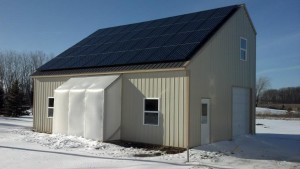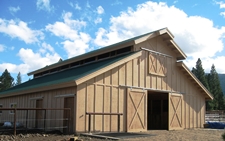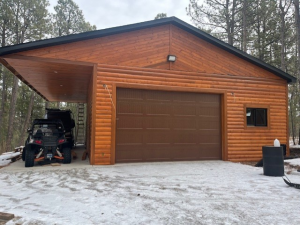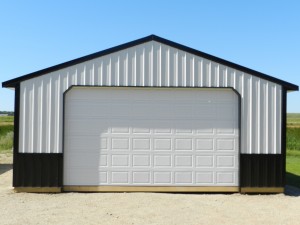Best Source of Off-grid Power
Reader CONNIE in WAUKESHA writes:
“When you’re off grid 1. What is the best source of power 2. Is there any window and door window grates to keep bears out?”
Solar power jumps to mind for most of us when it comes to off-grid energy. This sun-powered option, including photovoltaic solar panels, an inverter and batteries, can provide lots of electric power (especially if you get a lot of solar exposure where you live) for a long time, without any moving parts and a little maintenance. Downside, at least for now, is cost: it is rarely cost-effective to power an entire home entirely with solar, even allowing for several decades for a positive return on investment. Add to this wide variance of solar exposure by location and solar only works when sun is shining, and it’s easy to see why solar remains only an answer part, and not everything.
If you get good news after you contact your local weather service to check on average wind speed in your area, generating electricity from residential-sized wind turbines is another option for off-grid energy. Knowing average and wind speed ranges, you can estimate how much electricity a given system will produce. Keep in mind, wind speeds on a specific lot can vary significantly from regional averages depending on local topography.
 When it comes to picking a turbine size matters. According to U.S Department of Energy’s Wind Guidebook, if a typical home uses an average of 830 kWh of electricity per month, a turbine generating between 5 to 15 kW is required (taking into account average wind speed). Rotor size for a 10 kW turbine is about 23 feet in diameter and is mounted on a tower often more than 100 feet tall. If you live in town or on a small plot, a big one may not work as well, but many people have a necessary real estate for this size.
When it comes to picking a turbine size matters. According to U.S Department of Energy’s Wind Guidebook, if a typical home uses an average of 830 kWh of electricity per month, a turbine generating between 5 to 15 kW is required (taking into account average wind speed). Rotor size for a 10 kW turbine is about 23 feet in diameter and is mounted on a tower often more than 100 feet tall. If you live in town or on a small plot, a big one may not work as well, but many people have a necessary real estate for this size.
As with solar, there are pluses and minuses to going with wind energy off grid; biggest, most obvious one is a need for breeze: if wind doesn’t blow, turbine stays still and electricity isn’t generated. Wind turbines also have moving parts, meaning more things potentially requiring maintenance and have a possibility of failure. But if you’ve got a good consistent stiff breeze blowing through your back yard, you can harvest its energy for years to come.
Probably least-known off-grid energy system is microhydro electricity. It uses a source of running water, like a stream, to generate electricity; it’s produced from energy in water flowing from a high level to a lower level turning a turbine at system’s bottom end.
Microhydro electricity generation can be most cost effective of these three. If your source is good, it runs 24 hours a day, seven days a week, providing lots of off-grid energy for a long, long time; because it produces so much more consistent energy, fewer batteries are needed to store energy because there is less (or zero) time system isn’t harvesting energy. Of course, as with other two, it requires pretty specific on-site conditions; if you don’t have a stream in your backyard, you can’t use microhydro.
Yes, there are solutions to bears. While I have not used (or had a need to use) any, this particular provider appears to have thought of a few: https://www.tahoebearbusters.com/bear-deterrents/bear-fences/









